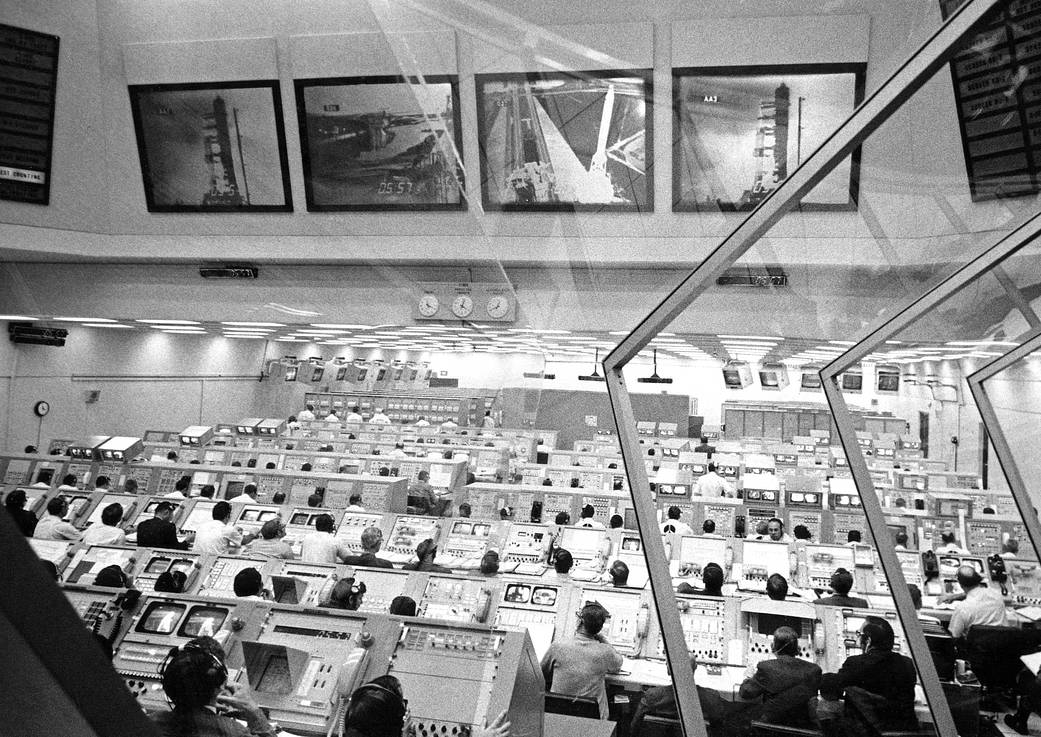Apollo 14 arrived in lunar orbit on Feb. 4, 1971, to prepare for the landing in and exploration of the Fra Mauro highlands. Apollo 14 launched carrying astronauts Commander Alan Shepard, lunar module pilot Edgar Mitchell, and command module pilot Stuart Roosa. Engineers had modified the spacecraft to prevent a recurrence of the accident that crippled Apollo 13 the previous year. After their Saturn V rocket delivered them into a parking orbit around the Earth, the third stage reignited to send them on their way to the Moon. The primary mission objectives to the Fra Mauro region of the Moon centered on deployment of the Apollo Lunar Surface Experiments Package, lunar field geology investigations; collection of surface material samples for return to Earth; and deployment of scientific instruments not part of the experiments package. Following their successful nine-day mission, the crew splashed down in the Pacific Ocean on Feb. 9.
In this image, engineers in Firing Room 2 of Kennedy Space Center’s Launch Control Center monitor the progress of the Apollo 14 countdown.
50 Years Ago: Apollo 14 Launches to the Moon
Image Credit: NASA
阿波罗14号于1971年2月4日抵达月球轨道,为登陆和探索弗拉莫罗高地做准备。阿波罗14号载着宇航员指挥官艾伦·谢泼德、登月舱飞行员埃德加·米切尔和指挥舱飞行员斯图尔特·罗萨发射升空。工程师们对这艘飞船进行了改装,以防止前一年阿波罗13号受损事故再次发生。在土星五号火箭将它们送入环绕地球的停车轨道后,第三阶段再次点火,将其送往月球。前往月球弗拉莫罗地区的主要任务目标集中于部署阿波罗月球表面试验包、月球实地地质调查;收集地面材料样品返回地球;科学仪器的部署不属于实验包的一部分。2月9日,他们成功完成了为期九天的任务,并在太平洋上溅落。
在此图中,肯尼迪航天中心发射控制中心2号射击室的工程师监视着阿波罗14号倒计时的进度。
图片来源:NASA







